BFG announes GeForce 9800 GTX+ OC
BFG Technologies, Inc., the leading North American and European supplier of advanced NVIDIA-based 3D graphics cards, power supplies and other PC enthusiast products, announced today the BFG NVIDIA
» Read full story
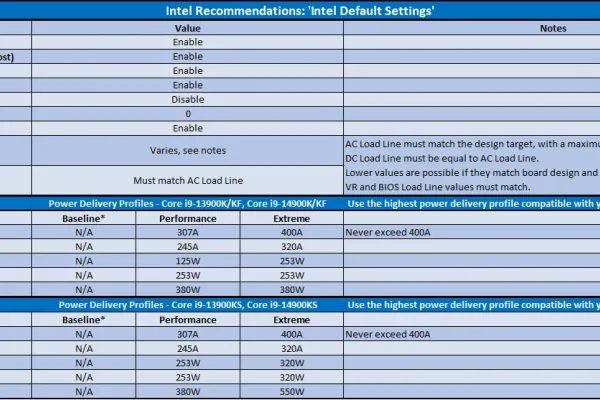








BFG Technologies, Inc., the leading North American and European supplier of advanced NVIDIA-based 3D graphics cards, power supplies and other PC enthusiast products, announced today the BFG NVIDIA
Western Digital on Thursday announced its enterprise-class 10,000RPM 2.5-inch drive designed for rack-mounted servers. The 10K VelociRaptor is designed for blade servers and 1U and 2U rack servers, and offers up to 300GB of capacity, while consuming 35 percent less power than the previous-generation WD Raptor drive, the company claims. WD said that the drive will be manufactured for high reliability in high duty cycle environments, resulting in the highest available reliability rating of any SATA drive at 1.4 million hours MTBF. It features a 3Gb/sec SATA interface and 16MB for maximum performance.
"WD is bringing to enterprise customers what PC enthusiasts already appreciate about the WD VelociRaptor: a combination of high performance and high capacity for hard drive storage," said John Rydning, IDC's research director for hard disk drives. "WD's new WD VelociRaptor, designed specifically for the enterprise in an energy efficient 2.5-inch form factor, gives system OEMs and end users a new storage option to consider to meet growing storage requirements."
The drive features Rotary Acceleration Feed Forward (RAFF) technology that optimizes performance when the drives are used in vibration-prone, multi-drive chassis and NoTouch ramp load technology so the recording head never touches the disk media, ensuring significantly less wear to the recording head and media as well as better drive protection in transit.
The WD VelociRaptor 2.5-inch hard drives (model WD3000BLFS) are currently under evaluation with OEM customers and will be available through select commercial distributors by the end of the month.
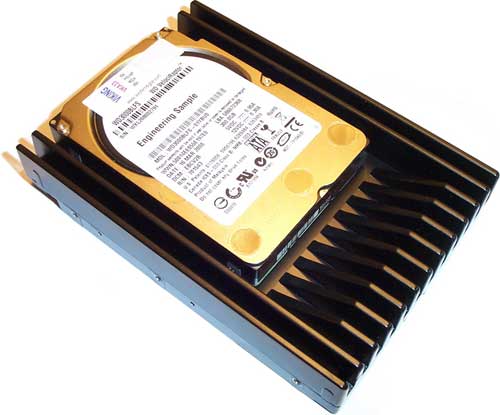
Thermaltake announces the new release of the silver shining V1 AX, a ultra-high performance next generation CPU cooler with friendly price tag but supporting most mainstream processors (Intel Socket LGA775 and AMD Socket AM2+ / AM2 / K8).
On the cooling front, V1 AX utilizes the newly developed 4 Channel
Dirk Meyer, the new chief executive officer of Advanced Micro Devices, said in an interview with a news-paper that the company would spin off its manufacturing operations in months time as a part of its asset smart strategy. This is the first confirmation of the expected action by AMD
You know, I predicted that the GeForce 9800 GTX+ model is going to be a pretty popular product. Honestly, it's really good value and performance for just over 200 USD. A price that is attractive but most of all acceptable to a lot of you. The minute that review was posted I started receiving email, emails asking us to test this product in SLI and then compare it with AMDs Radeon 4850 HD in Crossfire. And sure, that's a very interesting perspective to look at, so I'll happily dedicate some time for such an article, which you just landed at.
Read article here.
 RSA has apologised for a domain name registration glitch, which left
clients of its securesuite.co.uk payment processing service unable to
process payment as normal last Thursday.
RSA has apologised for a domain name registration glitch, which left
clients of its securesuite.co.uk payment processing service unable to
process payment as normal last Thursday.
Pizza purveyor Domino's, Dabs and others were hit by the snafu, which meant transactions either timed out or failed. In response to the problems, some online retailers disabled Verified by Visa on transactions that would normally be run through securesuite.co.uk.
RSA, which runs securesuite.co.uk through Cyota (a 2005 acquisition), at first denied knowledge of the glitch, insisting everything was fine with the domain. Initial checks suggested that the domain had expired after someone forgot to renew it. But a web-based system diagnostic tool that RSA uses gave the domain the all-clear.
"RSA is in the middle of updating all of its relevant domain names," the security vendor initially said. "In this particular case presented by The Register, the public WHOIS was not for some reason reflecting RSA's renewal, which has in fact already been processed.
"RSA is unaware of any service outages for our customers and have not received any complaints from card issuers, and all our diagnostics have passed."
However, further investigation, prompted by a request by El Reg to explain multiple independent reports of glitches, yielded the following response:
On 17 July, RSA 3D Secure within the United Kingdom was partially unavailable to certain customers and some transactions were delayed or blocked due to a domain name registration issue. The issue was identified and remedial action was taken. At the time, all Payment Card Issuers were immediately notified of a service interruption and they received continuous updates throughout until resolution.
The securesuite.co.uk is used to add 3D Secure protocol checks as an added layer of security to credit or debit card purchases and offered to consumers through such as the Verified by Visa and MasterCard SecureCode services. The online security and anti-fraud service has been mistaken for a phishing site in the past, but is (though it might appear otherwise) legitimate.
Reports of failed transactions involving securesuite.co.uk came to our attention. "I first noticed something was wrong when I couldn't order a pizza from Dominos - who have now disabled their Verified by Visa stuff," he told us. "The site [securesuite.co.uk] is down because the site's domain is suspended. Somebody really messed up."Each month we here at Guru3D.com we choose a rig of the month. The July 2008 winner is Marko Tadros with his amazing Pyramid rig, yet we also see some Luxor - Las vegas inspiration. Click on the link to see many photo's of this customized PC and the questionnaire covering his PC:
Click here:
http://www.guru3d.com/article/guru3d-rig-of-the-month--july-2008/
Contrary to many reviews on the web it's Windows Vista's fault that solid-state storage isn't performing as well as its proponents predicted. So said SanDisk CEO Eli Harari, but at least he didn't go as far as saying it's Microsoft's problem to fix.
SSDs are viewed as the heir apparent to the hard disk, particularly for laptops and other mobile computers. SSDs are way more shock-resistant and consume less power. Theoretically, they should deliver better performance.
Alas, many tests reveal that they don't.
SSD "performance in the Vista environment falls short of what the market really needs", admitted Harari at the company's earnings conference this week.
Why not? According to Harari, it's because "Vista is not optimised for Flash memory solid-state disks".
But isn't that the disk makers' problem? Despite pointing the finger at Vista, Harari tacitly admitted it was by signalling that what's needed are new Flash memory controllers that can be built into the SSDs and "compensate for Vista shortfalls".
We'd say they're the SSD's shortfalls. Vista works the way it does because of its long hard disk heritage. If SSD makers want their products to replace HDDs, it's up to them to develop drives that can be slotted into existing systems and deliver real benefits. Grumbling that it's Microsoft's fault isn't going to help. The problem surely stems from Windows' use of hard disk space for memory caching, something all modern and not-so-modern operating systems do. So it's not like the SSD manufacturers didn't have any warning this could be an issue.
Small, Cheap Computer will continue to benefit from Flash storage, Harari said, because they have "relatively unsophisticated and demanding requirements" - they're either running very basic Linux apps or, when they come with Windows XP, have virtual memory disabled.
SCCs will provide a role of SanDisk's current SSDs while the company works on next-gen controllers better suited to Vista. They won't appear, however, until late 2008 or early 2009, and then only in sample quantities, Harari said.
In Seattle the Gamefest is hosted. On the Gamefest Microsoft shared some abstract details on DirectX 11. DX11 will be supported fully by Windows Vista and arrives in the year 2010. Some new features:
In movies and TV series they sometimes show bloopers, in games .. they are there as well:
Microsoft today announced that its Games for Windows initiative is set to expand with the launch an online PC gaming marketplace this fall. The service will deliver free and paid downloadable game content, along with trailers, demos, and other content comparable to the company's Xbox Live offerings. In addition to the added features, the Games for Windows Live interface will also be redesigned to be "much more PC friendly." Microsoft has not yet specified whether full games will be made available for purchase on the network.
The company further announced that all Games for Windows Live multiplayer features are now entirely free.
Games for Windows Gold offered achievements, matchmaking, cross-platform play, and other features at a monthly subscription of $7.99, or $49.99 yearly. While the same features carry similar charges on Microsoft's Xbox 360 platform, gamers often criticized Microsoft for offering them at the same price on the PC, as free programs have traditionally offered comparable functionality.
 A computer security company on Monday inadvertently published details of a major flaw in the Internet's DNS several weeks
before they were due to be disclosed
A computer security company on Monday inadvertently published details of a major flaw in the Internet's DNS several weeks
before they were due to be disclosedThe flaw was discovered several months ago by IOActive researcher Dan Kaminsky, who worked through the early part of this year with Internet software vendors such as Microsoft, Cisco, and the Internet Systems Consortium to patch the issue.
The companies released a fix for the bug two weeks ago and encouraged corporate users and Internet service providers to patch their DNS systems as soon as possible. Although the problem could affect some home users, it is not considered to be a major issue for consumers, according to Kaminsky.
At the time he announced the flaw, Kaminsky asked members of the security research community to hold off on public speculation about its precise nature in order to give users time to patch their systems. Kaminsky had planned to disclose details of the flaw during a presentation at the Black Hat security conference set for Aug. 6.
Some researchers took the request as a personal challenge to find the flaw before Kaminsky's talk. Others complained at being kept in the dark about the technical details of his finding.
On Monday, Zynamics.com CEO Thomas Dullien (who uses the hacker name Halvar Flake) took a guess at the bug, admitting that he knew very little about DNS.
His findings were quickly confirmed by Matasano Security, a vendor that had been briefed on the issue.
"The cat is out of the bag. Yes, Halvar Flake figured out the flaw Dan Kaminsky will announce at Black Hat," Matasano said in a blog posting that was removed within five minutes of its 1:30 p.m. Eastern publication. Copies of the post were soon circulating on the Internet, one of which was viewed by IDG News Service.
Matasano's post discusses the technical details of the bug, saying that by using a fast Internet connection, an attacker could launch what's known as a DNS cache poisoning attack against a Domain Name Server and succeed, for example, in redirecting traffic to malicious Web sites within about 10 seconds.
Matasano Researcher Thomas Ptacek declined to comment on whether or not Flake had actually figured out the flaw, but in a telephone interview he said the item had been "accidentally posted too soon." Ptacek was one of the few security researchers who had been given a detailed briefing on the bug and had agreed not to comment on it before details were made public.
Matasano's post inadvertently confirmed that Flake had described the flaw correctly, Ptacek admitted.
Late Monday, Ptacek apologized to Kaminsky on his company blog. "We regret that it ran," he wrote. "We removed it from the blog as soon as we saw it. Unfortunately, it takes only seconds for Internet publications to spread."
Kaminsky's attack takes advantage of several known DNS bugs, combining them in a novel way, said Cricket Liu vice president of architecture with DNS appliance vendor Infoblox, after viewing the Matasano post.
The bug has to do with the way DNS clients and servers obtain information from other DNS servers on the Internet. When the DNS software does not know the numerical IP address of a computer, it asks another DNS server for this information. With cache poisoning, the attacker tricks the DNS software into believing that legitimate domains, such as idg.com, map to malicious IP addresses.
In Kaminsky's attack a cache poisoning attempt also includes what is known as "Additional Resource Record" data. By adding this data, the attack becomes much more powerful, security experts say. "The combination of them is pretty bad," Liu said.
An attacker could launch such an attack against an ISP's domain name servers and then redirect them to malicious servers. By poisoning the domain name record for www.citibank.com, for example, the attackers could redirect the ISP's users to a malicious phishing server every time they tried to visit the banking site with their Web browser.
Kaminsky declined to confirm that Flake had discovered his issue, but in a posting to his Web site Monday he wrote "13>0," apparently a comment that the 13 days administrators have had to patch his flaw before its public disclosure is better than nothing.
"Patch. Today. Now. Yes, stay late," he wrote.
He has posted a test on his Web site that anyone can run to find out if their network's DNS software is patched.
 "Double-u-double-u-double-u" does not trip off the tongue. Yet I seem
to say and hear it hundreds of times a day. Attempting to pronounce a
web address in English is not easy.
"Double-u-double-u-double-u" does not trip off the tongue. Yet I seem
to say and hear it hundreds of times a day. Attempting to pronounce a
web address in English is not easy.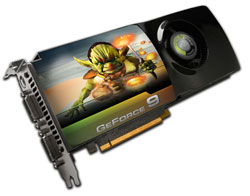 POINT OF VIEW, well known for its range of NVIDIA based Graphics cards, is launching today the GeForce 9800GTX+, an upgraded version of one of the fastest single GPU graphics card on the market, the GeForce 9800 GTX.
POINT OF VIEW, well known for its range of NVIDIA based Graphics cards, is launching today the GeForce 9800GTX+, an upgraded version of one of the fastest single GPU graphics card on the market, the GeForce 9800 GTX.
The GeForce 9800GTX+ has major improvements compared to its predecessor. The GPU has been down-sized to 55nm, which offering a major improvement to its power consumption efficiency, operating temperature and core speed. Its 512 MB DDR3 memory is running on 2200 MHz whilst the GPU core has a speed of 738 MHz. The speed of the internal processors has been increased with almost 250 MHz to an impressive speed of 1836 MHz.
The GTX+ graphics card also supports three fairly new technologies:
NVIDIA PhysX
True-to-life Water, cloth, explosions and smoke!
Experience even more realistic visual effects with the Physics accelerating technology!
NVIDIA CUDA
This technology allows other than graphics software to be run over the GPU. Have 128 sub-processors decode your video many times faster than conventional (CPU-based) software.
NVIDIA Hybrid Power
Not playing any games? Switch to your integrated graphics chip for minimal power consumption. A smart solution for a greener environment. Hardcore performance and perfect frame rates with Microsoft DirectX10 Shader model 4.0! Experience you favorite games in the highest resolutions and detail level with the brute force power of the GeForce 9800 GTX+! And if that
The soon to be released GeForce 9800 GT has surfaced on the web, well at least a photo and some information. A while ago we already spotted the XFX version, it seems that once sample from ECS got leaked and this time with some more information on it.
The GeForce 9800 GT seems to be nothing lese than a rebadged 8800 GT, with slightly different specifications. It will be have 112 Shader processor-enabled, still be based on the 65nm G92 GPU and have the same frequencies and specs as the 8800 GT counterpart. The one thing that did change is that Nvidia's board partners can play around with a customized PCB and choose to make something really special.
The card shown below is made by ECS and is cooled by Arctic Cooling's Accelero S1. It features a blue PCB and GPU, shader and memory frequencies of 600, 1500 and 1800 MHz. The card has 512MB of GDDR3 memory, a 256-bit interface and DirectX 10(.0) and SLI support.
It remains to be a very interesting card especially since the new price will be just under $150m and if you look closely at the bundle below, that's including Rainbow Six Vegas 2.
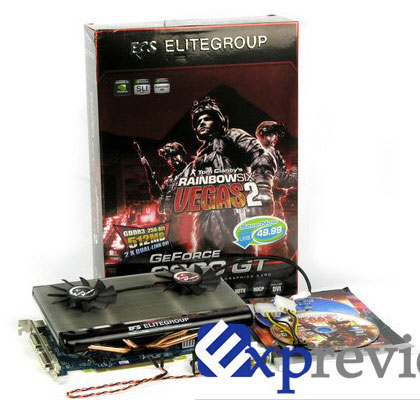
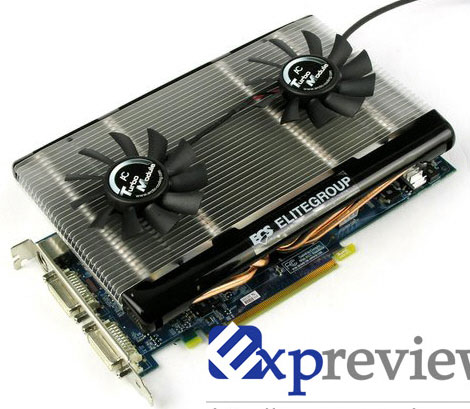
Art Lebedev Studios on Tuesday unveiled a new addition to its custom-faced keyboards, the Optimus Pultius, offering users 15 user-programmable, LCD-laden keys to sit beside their keyboard. The Optimus products have made waves in the industry due to their customizable LCD screens, making them ideal for Final Cut Studio or gamers who require quick access to hotkey functions. Lebadev did not mention pricing, but noted it would see release late this year or early next.
The Pultius operates in a similar way to the full-sized Maximus keyboard, with the same sized keys, as well as one pass-through USB port.
I dunno man ... that's not something i would buy.
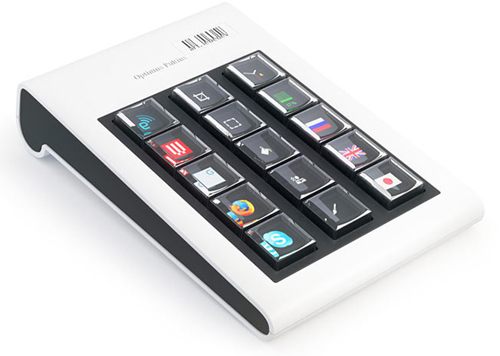
Considering the source, we're not really sure. But after a recent bout of bad press
Realtek 3D SoundBack restores audio effects, including surround sound, reverberation, and spatial effects, for legacy game titles when running on Windows Vista.
This software is basically Realtek's version of Alchemy, it'll enable the use of EAX1/2 (we guess A3D, assuming the realtek chips support the decoding) in Vista for games that should support EAX1/2. We have a discussion thread over here on this driver.
Download - click here.
 ATI released their July 2008 update of the Catalyst driver suite for radeon graphics cards. We have a thread open on these drivers right here. Please share your experiences.
ATI released their July 2008 update of the Catalyst driver suite for radeon graphics cards. We have a thread open on these drivers right here. Please share your experiences.
The following performance gains are noticed with this release of Catalyst
